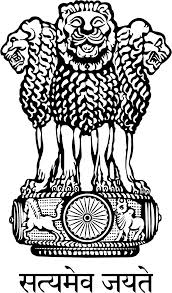What is the extent of problem of Japanese Encephalitis in India and control activities of JE?
BackJE viral activity has been widespread in India. The first evidence of presence of JE virus dates back to 1952. First case was reported in 1955.
Here are some key points about the extent of the problem of Japanese encephalitis in India:
Japanese Encephalitis (JE) continues to pose a significant public health problem in India. The first evidence of JE viral activity was documented by Virus Research Centre (VRC-NIV) in 1952. The first human JE case was reported in India in 1955 in Vellore, Tamil Nadu. A major outbreak occurred in 1973 and 1976 in the Burdwan district of West Bengal. In 1978, JE cases started appearing in the North Eastern States (Assam). In 2003, JE was included under National Vector Borne Disease Control Programme (NVBDCP). Since then, JE and Acute Encephalitis Syndrome (AES) have been reported in 355 districts across 24 States/UTs in India.
- Endemic regions: The number of endemic States / UTs have been increased in recent years. Some of the NE States have been included in endemic zone e.g. Assam, Meghalaya, Manipur etc. Other endemic states include Jharkhand, Bihar, Odisha, Uttar Pradesh, Madhya Pradesh, Chhattisgarh, Andhra Pradesh, Telangana, Karnataka, Tamil Nadu etc. Almost 30-50% of total JE incident cases are found only in Assam in recent years. Outbreaks have been reported from different parts of the country. It is endemic in 355 districts of 24 States/UTs.
- Seasonal outbreaks:JE cases in India often follow a seasonal pattern, with increased transmission during the monsoon (July to August) and post-monsoon period (October to November) when breeding places and mosquito population are increased. Outbreaks typically occur from July to October, peaking during the rainy season.
- High burden of cases:JEV is the main cause of viral encephalitis in many countries of Asia with an estimated 68 000 clinical cases every year (WHO). India accounts for a significant proportion of JE cases in Asia. The exact number of cases can vary from year to year, but several thousand cases are reported annually. However, it is worth noting that the reported numbers may not fully reflect the actual burden.
- Impact on vulnerable population:Japanese encephalitis primarily affects children and individuals living in rural areas, especially those involved in agricultural activities. Children under the age of 15 are particularly susceptible to severe forms of the disease, and the infection can lead to long-term neurological complications or death.
- Vaccination efforts:In response to the burden of Japanese encephalitis, India has implemented vaccination programme in endemic areas. Vaccination coverage has been expanded in recent years, targeting children in endemic regions to reduce the incidence of the disease. Adult vaccination has been started in 3 high prevalent States (Assam, West Bengal and Uttar Pradesh).
- Vector control measures:Mosquito control programme, including larval source reduction, use of insecticide-treated bed nets, and community-based initiatives including awareness campaign are important strategies for prevention and control of JE in affected areas.
Efforts are ongoing to enhance surveillance, improved access to vaccination, and strengthen vector control measures to control JE and mitigate the impact of Japanese encephalitis in India. Public health authorities continue to work towards reducing the burden of the disease through comprehensive prevention and control strategies.


























